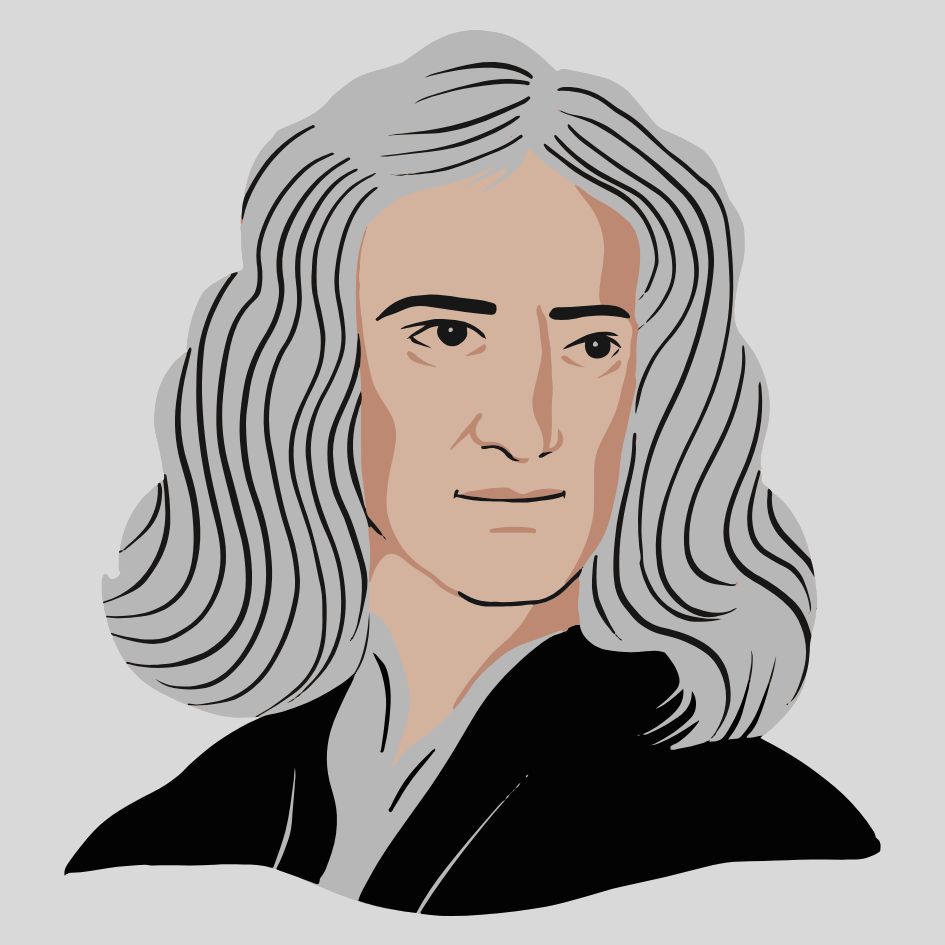
A Turning Point in Human History
Few names in history shine as brightly as Isaac Newton. His discoveries didn’t just change science—they redefined our understanding of the universe. But Newton wasn’t working in isolation. He was a central figure in a larger transformation known as the Scientific Revolution, a period during the 16th to 18th centuries when traditional views of nature were challenged, and the foundations of modern science were built.
In this article, we’ll explore:
- Who Isaac Newton was 👤
- What the Scientific Revolution meant 🔭
- How Newton’s work transformed the world 🌐
- His lasting legacy in science and beyond 📚
Let’s dive into the life and impact of this scientific giant.
What Was the Scientific Revolution? 🔬📜
The Scientific Revolution refers to a period roughly between 1543 and 1687, when European thinkers developed a new, empirical approach to understanding nature. It marked a shift from Aristotelian and Ptolemaic systems—based on authority and speculation—to methods grounded in observation, experimentation, and mathematics.
Key features of the Scientific Revolution included:
- The use of the scientific method 🧪
- The rejection of geocentrism (Earth-centered universe)
- Emphasis on mathematics to describe nature
- The questioning of traditional authorities, including the Church
Some notable figures before Newton were:
- Nicolaus Copernicus (heliocentric theory)
- Galileo Galilei (telescopic astronomy, motion)
- Johannes Kepler (planetary laws)
- René Descartes (analytical geometry and rationalism)
But it was Isaac Newton who brought it all together in a unified framework.
Early Life of Isaac Newton (1643–1727) 👶📚
Born on January 4, 1643, in Woolsthorpe, England, Newton was a premature baby who wasn’t expected to survive. His father died before he was born, and his mother left him in the care of his grandparents. This difficult upbringing shaped Newton into a solitary and deeply focused thinker.
He studied at Trinity College, Cambridge, where he was introduced to the ideas of Galileo, Descartes, and Kepler. During the plague outbreak in 1665–1666, the university closed, and Newton returned home. It was during this period—often called his "Annus Mirabilis" (Miracle Year)—that he developed some of his most groundbreaking theories. 🌟
Newton’s Major Contributions to the Scientific Revolution 🚀🧮
1. The Laws of Motion and Universal Gravitation ⚖️🌕
Perhaps Newton’s most famous contribution is his Three Laws of Motion, which describe how objects move and interact:
- Law of Inertia – Objects at rest stay at rest, and objects in motion stay in motion unless acted upon by an external force.
- F=ma – The force on an object is equal to its mass times its acceleration.
- Action-Reaction – For every action, there is an equal and opposite reaction.
These laws were revolutionary because they applied to everything, from falling apples to orbiting planets.
🔭 Universal Gravitation: Newton proposed that every object in the universe attracts every other object with a force proportional to their masses and inversely proportional to the square of the distance between them. This explained both:
- Why apples fall to the ground 🍎
- Why planets orbit the sun 🌞
These principles were published in his masterpiece:
Philosophiæ Naturalis Principia Mathematica (1687)
Often called simply the Principia, this work is regarded as one of the most important books in the history of science. It laid out the mathematical principles behind gravity and motion, uniting the heavens and the Earth under one set of laws—a concept that was radical at the time.
2. Optics and the Nature of Light 🌈🔍
Newton didn’t just revolutionize physics—he also made major contributions to optics.
He discovered that white light is actually made up of all the colors of the rainbow 🌈. Using a prism, he showed that:
- Light could be split into its component colors.
- These colors could not be changed further, proving they were fundamental.
He also built the first reflecting telescope, which used mirrors instead of lenses. This design solved many problems with earlier refracting telescopes, such as chromatic aberration (color distortion).
3. Mathematics: The Invention of Calculus ➗🧠
To describe motion and change, Newton needed a new kind of mathematics. This led him to develop calculus—a powerful tool for analyzing change and motion.
Although Gottfried Wilhelm Leibniz independently developed a similar system (and published first), both men are credited today. The resulting dispute led to a bitter intellectual feud, but the math itself changed the world.
Newton and the Scientific Method 🧪📏
Newton emphasized the importance of:
- Careful observation
- Controlled experimentation
- Mathematical precision
His approach was a model for future scientists. He once wrote:
"I frame no hypotheses... but deduce them from the phenomena."
This meant that rather than guessing how nature worked, Newton started with empirical evidence and built theories from there—a principle at the core of modern science.
Religious Beliefs and Alchemy: The Hidden Side of Newton ✝️🧬
Despite being a champion of rational science, Newton was also deeply religious and fascinated by alchemy. He spent years studying biblical texts, trying to decode prophecies and divine truths. He believed:
- The Bible contained hidden knowledge about the universe.
- Alchemy could reveal spiritual truths.
This side of Newton was kept mostly private during his life, as his unorthodox views (such as denying the Trinity) could have caused controversy.
Today, scholars recognize that Newton’s faith and scientific pursuits were deeply intertwined. He didn’t see a conflict between God and science—instead, he believed that discovering the laws of nature was a way to understand the mind of God.
Impact on the Enlightenment and Modern Science 💡🌐
Newton’s influence extended far beyond his own lifetime. His work became the cornerstone of the Enlightenment, an intellectual movement that valued reason, science, and progress.
Key effects of Newton’s legacy:
- Inspired philosophers like Voltaire and Locke
- Provided a model for mechanistic understanding of the universe
- Gave rise to classical physics, which dominated until Einstein
The idea that nature followed universal laws that could be understood through reason and observation laid the foundation for nearly all scientific disciplines today.
Criticism and Limitations: Science Doesn’t Stand Still ⚠️🧭
No scientific theory is final—and Newton’s wasn’t either. In the 20th century, Albert Einstein introduced relativity, which refined and, in some extreme cases, replaced Newtonian mechanics.
Key differences:
- Newton’s laws work well at everyday speeds and sizes.
- Einstein’s theories are needed for things moving near the speed of light or with massive gravitational fields.
Still, Newton’s work remains foundational. We still teach his laws in classrooms around the world because they work extremely well in most real-world situations.
Newton’s Legacy in the Modern World 🚀💻
From NASA’s space missions to engine design, Newton’s principles are still applied every day. His influence is everywhere:
- Physics and Engineering: Rockets, bridges, machines
- Astronomy: Planetary motion, orbits, telescopes
- Mathematics: Calculus in economics, biology, computer science
- Philosophy: Rationalism, empiricism
In short, Newton helped usher in the modern world. Without his ideas, we wouldn’t have satellites, smartphones, or even weather forecasts.
Fun Facts About Isaac Newton 🤓📎
- He was elected president of the Royal Society in 1703.
- Knighted by Queen Anne in 1705—becoming Sir Isaac Newton.
- Buried with honors in Westminster Abbey, alongside kings and poets.
- Once stuck a needle behind his eye to study how vision worked (don’t try this at home!).
Conclusion: The Man Who Measured the Universe 🌌📏
Isaac Newton was more than just a brilliant scientist—he was a symbol of what human reason and curiosity can achieve. By uniting physics, mathematics, and astronomy, he gave us a coherent picture of how the universe works. His work didn't just answer questions—it inspired generations to keep asking more.
If the Scientific Revolution was the dawn of modern science, Isaac Newton was its brightest light. 🌞✨

